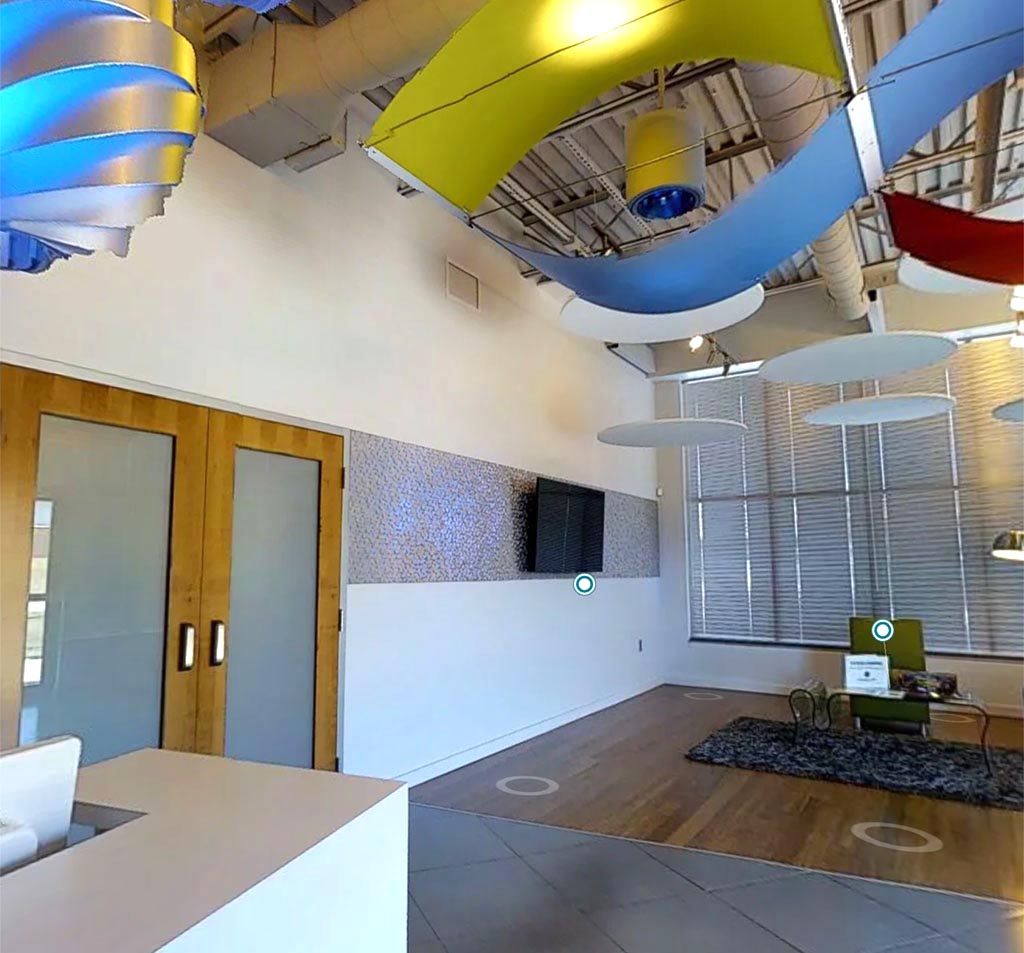A VR Tour allows your clients and potential customers to virtually and photorealistically walk through any environment from anywhere in the world using a desktop PC, mobile device or VR headset. Whether the space currently exists or is in the design or construction phase, VR tours realistically convey scale, design, material finishes and much more. This allows your clients and customers to experience your showroom, visit distant facilities or explore what you've designed for them - all with zero travel or expense. That adds significant value to your service or product offering. Internal uses include employee training, remote safety compliance audits, remote construction review, and remote retail merchandising compliance audits.
Existing Facility VR Tour
In this example virtual tour, you visit the lobby of the Kinetic Vision facility. These tours are quickly and cost-effectively created using a proprietary 3D camera that is faster and more accurate than traditional photogrammetry. Notice that you can teleport to different locations, activate tagged locations, and see a lobby overview in floor-plan or miniature "doll house" view. The contents of the tagged hot spots can be web links, images, videos, or animations.
This low-cost technology enables retailers to have virtual showrooms, manufacturers to have virtual factory tours, and schools to have virtual field trips, all without the time and expense of visiting the physical locations.

Historic Building VR Tour
Cincinnati Union Terminal was a significant development in the history of Cincinnati transportation. One of the last great train stations built, Union Terminal is a Cincinnati icon and one of the most widely regarded examples of the Art Deco style. Since its opening in 1933, Union Terminal has had a long and storied history, from welcoming soldiers home from World War II to becoming the home of three museums. The entry of the expansive facility was an enormous rotunda, which even today is second in size to only the Sidney Opera House. When the building opened in 1933, it connected to another important space, the train concourse, a 450-foot-long structure that sat over the tracks below. Here 16 train gates connected to the platforms where passengers and baggage would be loaded or unloaded from the train.
After the United States entered WWII, the number of troops moving through the Union Terminal complex exploded, reaching a war time peak of 34,000 people per day in 1944. By war’s end, the facility had served millions of troops, service personnel and their families. Following the end of WWII, passenger train travel went into a steep decline. As airlines and highways took over as the primary means of travel in the United States, fewer and fewer trains passed through Union Terminal. By 1972, when Union Terminal closed as a train station, only two trains per day were passing through a station designed to handle 216 trains per day. After an unsuccessful attempt to use the terminal for freight transportation, the train concourse was demolished in 1974.
From then the only visual record of the train concourse were archival photographs, until Kinetic Vision created a virtual reality tour of the entire 450-foot facility in 2017. Developed from a 3D model created by David Lombardi, and using historic photos as reference, the VR tour includes all the ticketing centers, seating areas, shops, light fixtures and tile murals of the original concourse. Now anyone, from any location, can experience the incredible Art Deco design, materials and artwork of this once-vibrant facility.
Images shown are from the VR experience and are rendered in real time.

